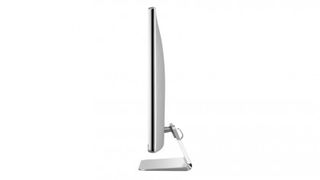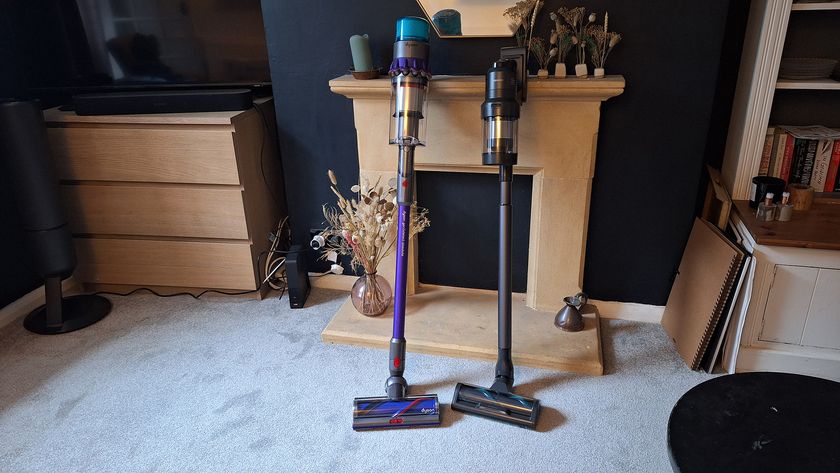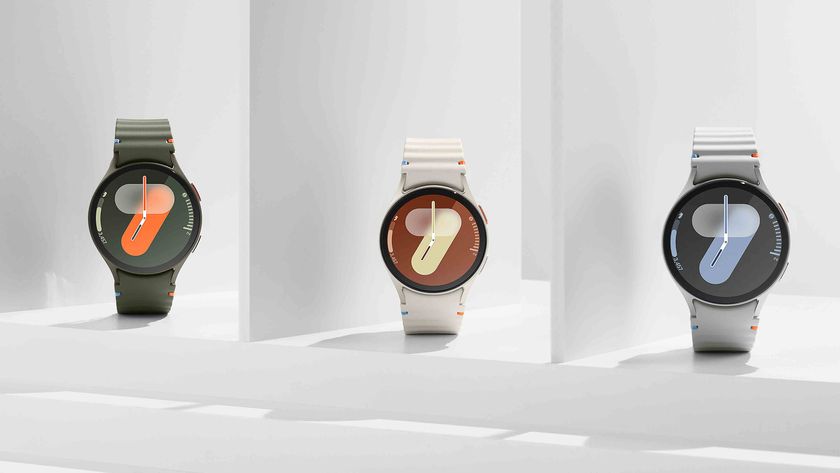LG on the world's first UQHD monitor, 'cinematic' 21:9 and curved displays
The 34UM95 is a blockbuster panel engineered for Hollywood
TRP: The 34UM95's "floating" glass base is distinctly iMac-like. Where did that design decision come from?
HdV: Before I joined we did a lot of research into this area. One of the key points that are annoying end-users is cabling, so we use cable cutters, but also the "crystal floating" stand, as we call it.
It just makes it a bit more spacious and gives the owner a bit more clarity and ease on the desk or wherever they place it. It almost makes the monitor float on its stand, so it's largely aesthetic, but also a little bit to give that premium look and feel to the product, which is premium itself.
Global appeal
TRP: How much of the monitor's final form came from decisions made by LG employees in Western countries and how much of it stemmed from South Korea?
HdV: A lot of the R&D and product development happens in our Korea HQ, but any consumer or end-user research that we do always covers the main countries across all of the continents. The US, Latina America and the UK are important countries to LG, as are Germany and Italy.
With that, you create not only a diversity in the research and gather feedback from end-users. So you could combine for example Italy, where you get a lot of feedback about aesthetics and design, with the UK, which tends to prefer productivity over design. You get a good mixture that way, and you can make the best compromises. But you can never meet all requirements 100%.

Ahead of the curve?
TRP: We've seen OLED TVs get the curved treatment in the past year. At 34 inches, the 34UM95 is bigger than some living room TVs. Could we see curved PC monitors in the future?
Are you a pro? Subscribe to our newsletter
Sign up to the TechRadar Pro newsletter to get all the top news, opinion, features and guidance your business needs to succeed!
HdV: That's difficult to answer. You see the curved OLED TVs from LG but also our competitors, and you can see by the price points that show OLED is still very expensive, and that's without the curved technology.
The 34UM95 is already nearly £1,000 retail. If you look at the 4K 34-inch or widescreen monitors of our competitors, they almost reach £2,000. If we added a curved OLED technology to what is now an LED panel, the price would double at the very least.
You start to ask whether it would be worth it for the end-user. I'd say at this moment no, as it's primarily business users that use them. That said, the technology goes quicker than we can keep up at the moment, so who knows where we will be in 2015 or 2016.
TRP: Are there any particular global markets where you think this monitor will be popular?
HdV: The UK is picking it up a lot quicker than we thought because of its price point. We launched this model around a month an a half ago and we already have a back log - even samples sent out to press have been revoked in the last shipment to keep up with demand. The US is potentially a competitor due to the popularity of Apple products there, and then there's countries in Europe such as Germany and the Netherlands, where a lot of creative people live.
Looking ahead
TRP: Where do you go from here with the 21:9 format?
HdV: Good question. I think that 34-inches is pushing the boundaries. I think if we went even wider we would have a problem with the visibility on the left and right edges for the end user, so I think we're pushing the maximum now. It could be in the near future that we go to 4K when the overall price might drop and this segment is full. 4K is going to be full of competition, whereas QHD isn't, so we see a lot of potential here.
The future will always be going toward better technology, so we'll be going through 4K and maybe 5K, but screen-wise I think we're hitting the max where we can keep it sensible for the end-user.
TRP: No leaps to 8K on the roadmap then?
HdV: Not any time soon, no. That will be a few years from now. Let's face it - a lot of the content provided by film makers and TV channels isn't even 4K yet. The technology is going faster than the content providers can go. We provide them with the platform, but it's now up to them to catch up with us while we try to keep in front of them.
4K will be the next step. It's quicker and easier for the market to pick that up over 3D technology. I presume we'll be going that way, but it's difficult to say. 34-inches is probably pushing the boundaries on the width we can provide for 21:9, but the screen resolution will only improve over the years to come.













